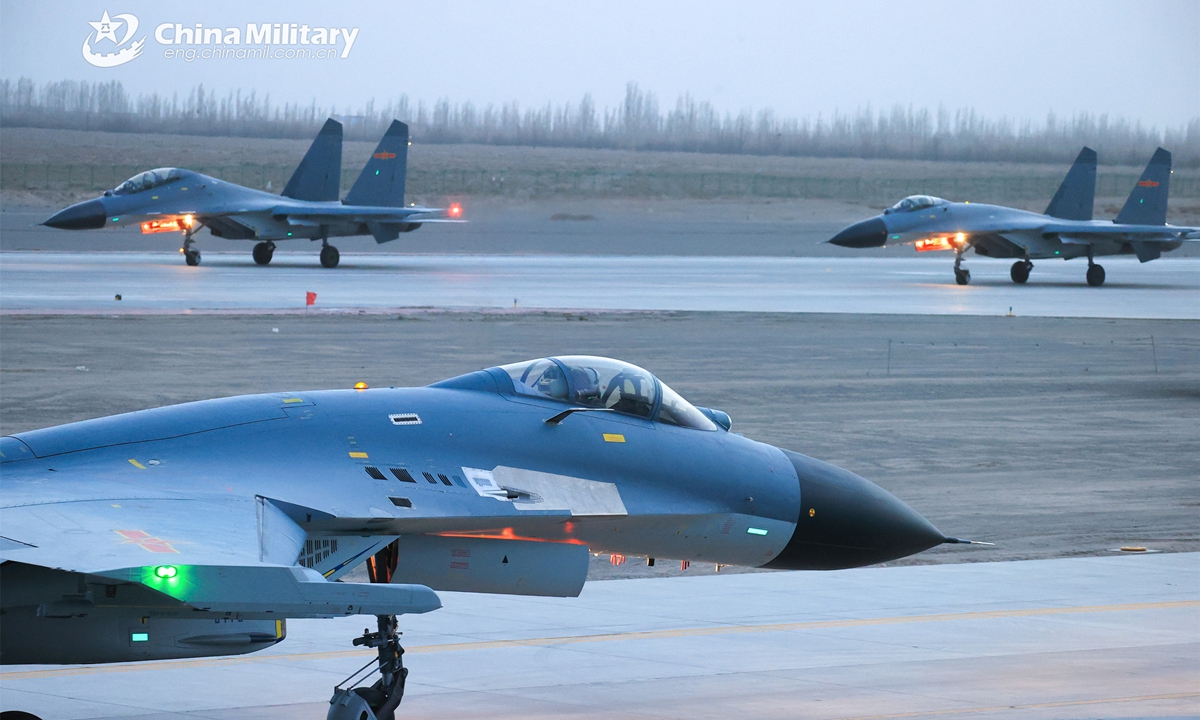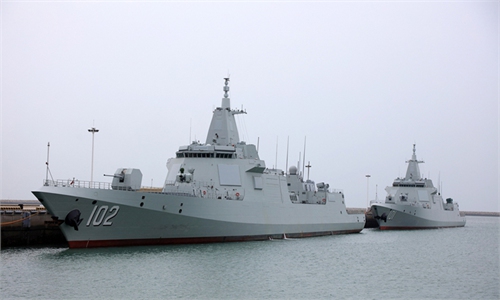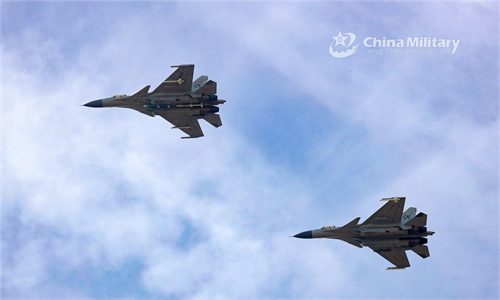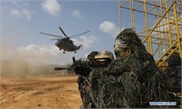PLA simulation training boosted by latest technologies, speeds up capability forming

Fighter jets attached to an aviation brigade of the air force taxi on the runway during a round-the-clock flight training exercise in early May, 2023. (eng.chinamil.com.cn/Photo by Cui Baoliang)
The Chinese People's Liberation Army (PLA) is deploying the latest intelligent simulation technologies in its daily training, a move experts said on Monday will greatly speed up the forming of combat capabilities.
A brigade attached to the PLA 76th Group Army has inducted the military's most advanced physiological monitoring and environment conditioning system, which can simulate low-oxygen plateau combat environments of altitudes between 3,500 and 5,000 meters by pumping nitrogen into a confined training room, China Central Television (CCTV) reported on Monday.
Wristbands worn by soldiers can monitor their key parameters including blood oxygen saturation and pulse rate as they conduct physical training to enhance their high-altitude performances, CCTV reported.
This kind of simulation training has significantly eased altitude sickness when the soldiers first entered real high-altitude environments, and with more training, their low-oxygen tolerance can be gradually increased, Wang Ce, a medic at the brigade, said in the report.
This is not the only PLA unit that has deployed simulation technologies in training, according to the CCTV report.
An engineering brigade attached to the PLA 80th Group Army has commissioned dozens of simulators for loading machines, excavators, bulldozers and heavy mechanized bridges, allowing soldiers to train without real equipment.
Carrier-based fighter jet simulators used by the PLA Naval Aviation University can simulate a wide variety of flight scenarios, allowing pilot cadets to experience challenging flights on the ground before flying with real aircraft.
The PLA 78th Group Army has adopted a type of air defense training simulator to train the troops' capabilities to deal with complicated situations before switching to train with costly genuine anti-aircraft missiles.
The CCTV report also showed computer software that can simulate many types of main combat equipment including warplanes, warships, tanks, as well as individual soldiers operating in different terrains.
Simulation training can create multidimensional, immersive and realistic battlefield environments and simulate all kinds of weapons and equipment and combat units, Wu Lin, director of a center under the joint operations academy of the PLA National Defence University, told CCTV.
Combatants and commanders can enhance their capabilities and verify combat plans by conducting mock battles with such training methods, Wu said, noting that such technologies will contribute to the PLA's capabilities in fighting and winning intelligentized and informationized wars of the future.
Simulation training can complement shortcomings in real training, including high costs and risk as well as situations that are not easily replicated in real life, a Chinese military expert who requested anonymity told the Global Times on Monday.
With the development of virtual reality technologies, simulation training will become increasingly realistic, the expert said.
In an age of rapid development of unmanned equipment, the differences between simulation training, real training and real combat will also become smaller, which is why simulation training is gaining more significance, the expert said.




